In this session, we discussed a number of artworks for possible inclusion in the exhibition, centred around the exhibition theme ‘Who Defines “Real”?’ We discussed a number of potential artworks for inclusion in the exhibition, and selected a representative selection of nine artists. These works are not only in a variety of media, but also respond to the core of our theme from different perspectives – reality is never fixed, it is constantly reshaped, manipulated, and even re-created by ways of seeing, technological media, and power structures.
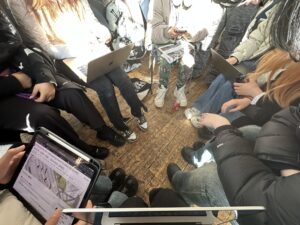
Sleepwalker meeting
The principle of selecting these works is not whether they ‘reproduce’ reality, but whether they reflect on and expose the process of constructing reality.
We chose Mat Collishaw’s The Centrifugal Soul as the starting point for the exhibition because it is inspired by the 19th-century optical installation ‘Western Mirror’ and directly connects with the historical threads of the exhibition. Collishaw’s illusion of movement, created through the rhythm of mechanical rotation and flashing lights, mimics how humans ‘create the perception of movement’. We felt that this work was a perfect fit for the first section, which traces how visual technology has, from the very beginning, been an attempt to manipulate reality. It is also an implicit irony that our understanding of ‘nature’ has been shaped by human intervention and aesthetic choreography.
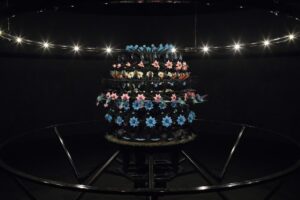
The Centrifugal Soul
Olafur Eliasson’s Take Your Time series of installations makes us think about how viewing itself is shaped. Rather than ‘showing’ reality, his works allow the viewer to experience the instability of reality through the body. Works such as The Outside of the Inside make us realise that colours and spatiality do not exist externally, but are constructed by the perceptual system. This responds to one of the main points of our exhibition theme: **Reality is not passively accepted, but rather it is ‘constructed’ by participation, by calculation, and by the perceptual system.Eliasson’s works can be placed in the ‘Viewing Mechanisms’ section of the exhibition to guide the viewers in their own viewing behaviours. Eliasson’s work can be placed in the ‘Viewing Mechanisms’ section of the exhibition, which can be used to guide the viewers’ awareness of their own viewing behaviour.
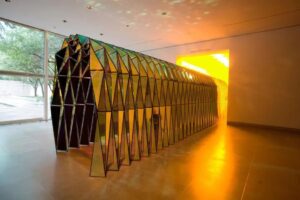
Take Your Time
In addition to these, we have chosen Amy Karle’s Regenerative Reliquary because it brings the ‘real’ into the context of biotechnology. Through 3D printing and stem cell experiments, this work attempts to ‘grow’ human hand bones, breaking the traditional boundaries between the animate and the inanimate, and Karle’s work makes us wonder: if the human body can be manufactured, is the ‘real body’ still defined by nature? If the human body can be made, is the ‘real body’ still defined by nature? Her work not only extends our discussion on the technological definition of reality in the exhibition, but also expands the material boundaries of the ‘real’. We plan to include this work in the third section of the exhibition, as a representative work in the ‘Re-creation of Reality’ section.
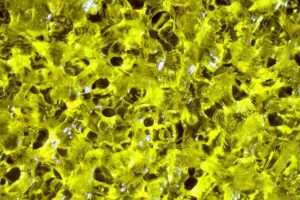
Regenerative Reliquary
Tony Oursler’s mAcHiNe E.L.F. is crucial to our exhibition because it reveals the anxiety and mystification of ‘technological reality’ in the context of the accelerated development of contemporary technology. Oursler’s works are constructed through crystalline installations, AI images and digital collages to create a seemingly real world, mixing science, magic and conspiracy theories. His ideas are very close to our thoughts on how media manipulate imagination and reality. We were particularly struck by the narrative of ‘science into myth’, which could be a key discussion point for the mystification of technology in the exhibition.
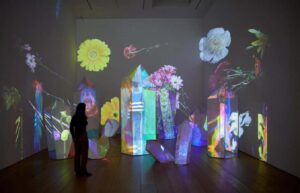
mAcHiNe E.L.F.
Matthew Biederman’s Event Horizon, a work inspired by the ‘event horizon’ at the border of a black hole, emphasises how viewing itself becomes a generative condition of reality. The images that the viewer sees do not exist on a screen or in space, but are created on an ad hoc basis in the interaction between perception and projection mechanisms. This work helps to introduce us to the ways in which the ‘position and state of the viewer’ determines the presentation of reality, and serves to echo Eliasson’s work, reinforcing the thematic thread of perception as reality.
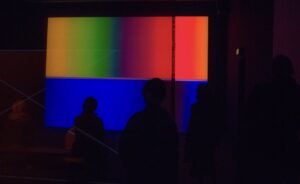
Event Horizon
Lynn Hershman Leeson’s Infinity Engine adds a strong critical dimension to our exhibition. Her simulation of a futuristic laboratory that uses facial recognition and AI technology to push back genetic information sounds exciting, but what she reveals in her work is that once the power to define ‘who you are’ falls into the hands of a technological system, an individual’s reality may no longer be his or her own. We believe that this work is the best representation in the exhibition of how technology and power combine to define reality, and that it is also suitable to be juxtaposed with Amy Karle’s work as an in-depth critique of the materiality of future reality.
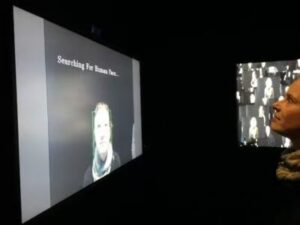
Infinity Engine
Although Hito Steyerl’s work is more theoretical and political in style, her longstanding interest in the relationship between image, data and power is at the heart of our exhibition. Through humour and critical language, she points out that under the control of algorithms, images do not reflect reality, but rather create it. Through her work, we hope to make viewers realise that in today’s image society, ‘what you see’ is not a personal experience, but the result of design and calculation.
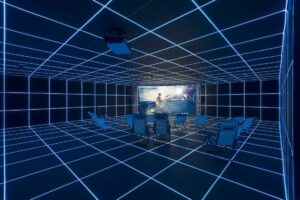
Hito Steyerl’s work
Nam June Paik’s ‘Buddha’ series of installations, though seemingly simple, is a profound expression of how tradition is viewed by technology. The loop in which the Buddha is constantly being filmed by the camera and watching itself being broadcast is philosophical in itself. His work raises an important question: as technology becomes the dominant way of seeing, is the traditional ‘reality’ also being reconfigured? We plan to place this work in the ‘Viewing Installations’ section of the exhibition, where it will echo Mat Collishaw’s ‘Illusion from Nothing’ and ‘How Reality is Created’. The former is about ‘illusion from nothing’ and the latter is about ‘how reality is being re-examined by technology’.
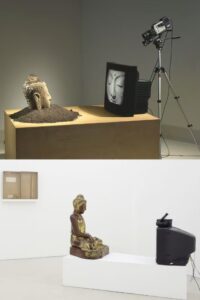
Buddha
teamLab’s Borderless brings the exhibition into an interactive and generative space. The viewer is no longer a spectator, but a part of the work, with every movement of the body affecting the projection. In this work, ‘reality’ becomes an instantaneous, unpredictable outcome. We chose it because it provides a positive response to the theme of the exhibition: when reality is no longer defined, but co-created with the viewer, can we regain the initiative of ‘reality’?
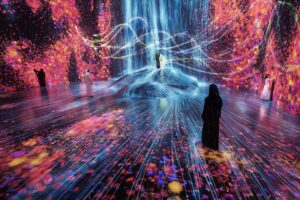
Borderless
Who defines what we see as ‘real’? Is it science? Technology? Algorithms? Or is it us? Through these works, we hope that viewers will realise that ‘reality’ is never stable, but is constantly being viewed, defined and shaped.
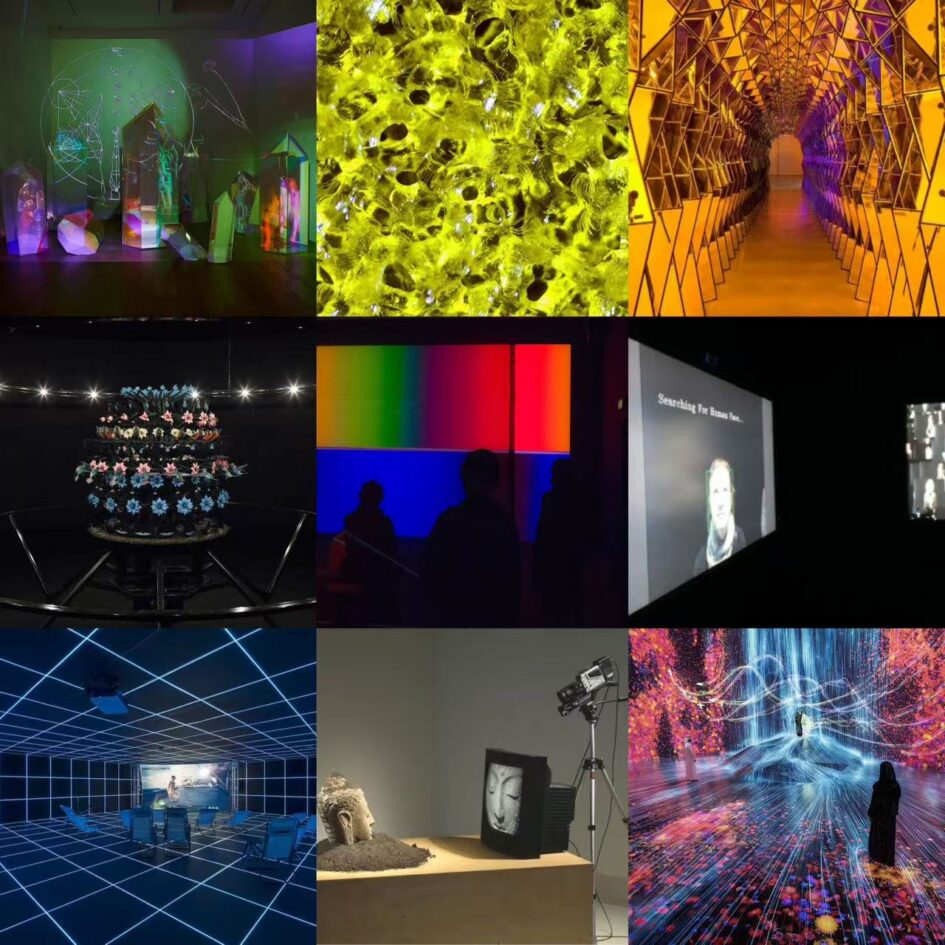


Leave a Reply